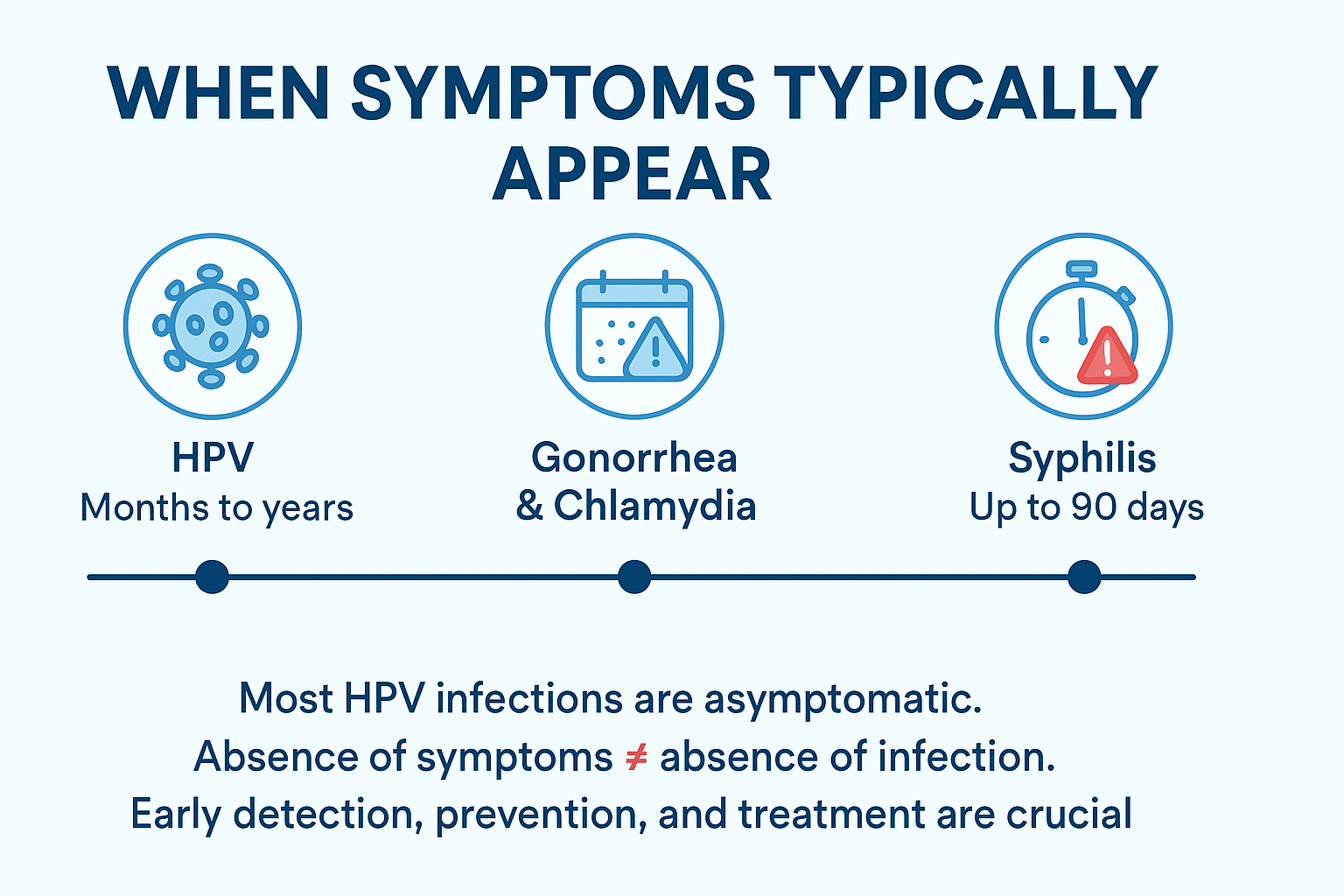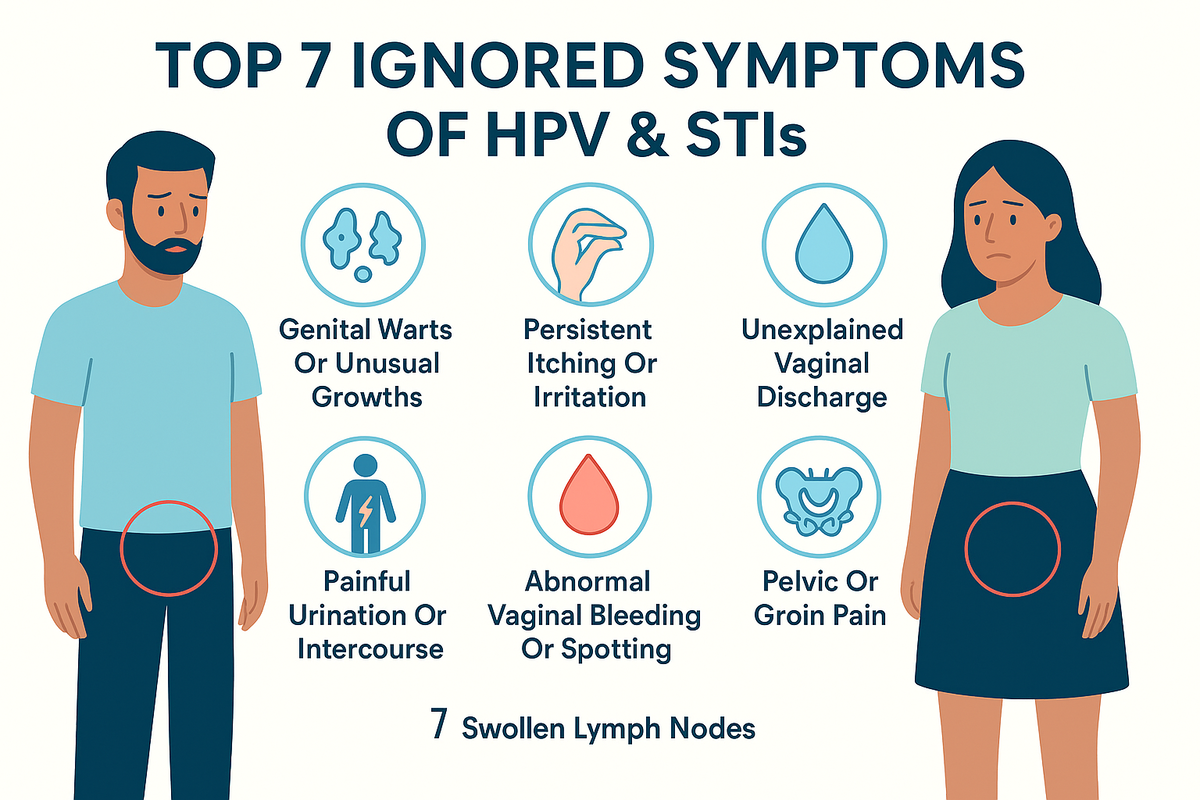In a country like India, with social stigma and limited sexual health education, the diagnosis often faces delays. In fact, according to the World Health Organization (WHO), over 570,000 new cases of cervical cancer are diagnosed globally each year. And many of these could be prevented with early detection.
Which is why recognising what is STI symptoms, including even those that seem minor, is the first step towards getting timely medical care. On one hand, the early symptoms of STIs in females are often misinterpreted as hormonal changes or hygiene issues. On the other hand, men lack the visible signs, which can yet again lead to underestimating their risk.
In sexual health, silence is rarely a good sign. Many sexually transmitted infections (STIs), including human papillomavirus (HPV), can develop quietly, showing little to no warning until complications arise. Understanding what is STI symptoms and learning to recognize them early can prevent long-term consequences, including certain types of cancer.
This guide includes the top 7 ignored symptoms, explains STIs and when do symptoms appear, highlights common STI symptoms in females, discusses HPV symptoms treatment, and how Uncoded can help strategize better.
Table of Contents
ToggleList: Top 7 Ignored Symptoms
1. Genital Warts Or Unusual Growths
If there are small, flesh-colored or grey swellings in the genital area, then that can be among the clearest hpv symptoms. They may cluster or remain solitary. While they are mostly painless, they do indicate active HPV infection and ask for immediate medical evaluation.
2. Persistent Itching Or Irritation
Ongoing itchiness in the genital or anal area should not be ignored. This may indicate that irritation is caused by HPV, fungal infections, or other STIs. Especially when it is coupled with other signs, it can be an answer to “what is STI symptoms?”
3. Unexplained Vaginal Discharge
Changes in color, consistency, or odor can be among the common STI symptoms in females. Now this can be a very common symptom for bacterial vaginosis, trichomoniasis, gonorrhea, or chlamydia, while also signalling towards HPV-related cellular changes.
4. Painful Urination Or Intercourse
Many people ignore this, but if there is discomfort during urination or sexual activity, it can be one of the early symptoms of STI in females, which also affects men. While urinary tract infections are common, if there is persistent pain, it would be safe to go for STI testing as soon as possible.
5. Abnormal Vaginal Bleeding Or Spotting
Besides menstrual bleeding, any abnormal vagina bleeding or spotting, especially after intercourse, can be a significant warning sign. This may be an indicator of HPV-related cervical changes or other reproductive tract infections, which one can get tested for.
6. Pelvic Or Groin Pain
People also report a dull ache in the lower abdomen or groin, which they often overlook. But this can signal advanced or untreated STIs. This one can show up differently in men and women, as men may experience testicular discomfort, while women may notice heaviness in the pelvic region.
7. Swollen Lymph Nodes
Last but not least, enlarged lymph nodes in the groin can be the body’s immune response to infection. When combined with other symptoms, then this may coincide with the timeframe of when STI symptoms appear.
When Symptoms Typically Appear
The onset of symptoms can vary person to person. Some STIs present within days, while HPV may remain latent for months or years. In fact:
- Most HPV infections are asymptomatic and resolve naturally within two years in about 90% of cases.
- Other STIs, such as Gonorrhea and chlamydia, may appear within 1–3 weeks, while syphilis can take up to 90 days.

This delay means that when STI symptoms appear, it may not be a fixed timeline. The absence of symptoms does not mean the absence of infection. This is why awareness about its treatment, prevention, and early detection is crucial.
Treatment & Prevention
Below is everything you need to know about treatment and prevention of HPV in both males and females:
HPV Symptoms Treatment
- Genital warts can be treated with the help of topical agents, cryotherapy, electrocautery, or surgical removal. Although they might not ensure the elimination of infection, but only eliminate the warts.
- In females, precancerous lesions may be managed through procedures like loop electrosurgical excision (LEEP) or laser therapy. The former can be a less invasive method, which can help!

There is technically no direct antiviral treatment that exists for HPV itself. Here, the focus is on managing symptoms and preventing progression. So, if there are symptoms, visible or potential, they can be managed, but the infection takes time to heal and leave.
Prevention Strategies
The best one can do is prevent. Here is how:
- HPV vaccination can be a highly effective solution to prevent infection from high-risk HPV types. It is recommended before the start of sexual activity, but can also be beneficial in later ages. So, the sooner, the safer.
- Barrier methods, like consistent use of a condom, can also reduce the risk of transmission. Although because HPV can also spread from skin-to-skin contact, this method cannot offer complete protection.
- Regular screening, like Pap smears for women and targeted diagnostic testing for both genders, can also help to detect the early changes.
- There should be honest discussions and mutual testing to reduce risk for both partners.
How Uncoded Helps?
Molecular and genomic diagnostics, such as those offered by Uncoded, are like a magnifying glass for your health. Instead of waiting for warts, pain, or discharge to appear, these tests can spot HPV and other STIs at a microscopic level, long before you notice anything is wrong.
We work by looking directly for the virus’s genetic material (DNA or RNA), which means doctors can act early, choose the right hpv symptoms treatment, and even keep track of whether the infection comes back. This is not just early detection, but early prevention. This kind of testing is especially important when there are no early symptoms of STIs in females or men.
Conclusion
Our final thoughts are that the STIs, particularly HPV, are not rare, and the symptoms are often too subtle to notice. Especially if there is no awareness, it can be challenging to treat it at the correct time. From genital warts to abnormal bleeding, each sign deserves timely attention. Knowing what STI symptoms are and acting on them can prevent severe outcomes, including cancer.
With the help of vaccination, regular screening, and modern genomic testing, one can seek preventive and early treatments. Overall, the most important step is to act without waiting, especially when something feels unusual.
Frequently Asked Questions
1. Do most men not get HPV symptoms?
Yes. Most HPV infections in men are asymptomatic, meaning they might not show symptoms but can still transmit the virus. Although visible symptoms might occur in the form of genital warts.
2. Do 90% of people have HPV?
Being one of the most common STIs, according to studies, 85–90% of sexually active individuals will contract HPV during their lifetime. Which is why awareness about it is extremely important.
3. Can I clear HPV after 30?
Yes! The immune system can clear HPV at any age, with about 90% of infections resolving naturally.
4. Do condoms prevent HPV?
Use of barrier devices like condoms during sexual intercourse can significantly reduce the transmission risk. But it cannot eliminate it entirely due to the skin-to-skin spread beyond covered areas.

